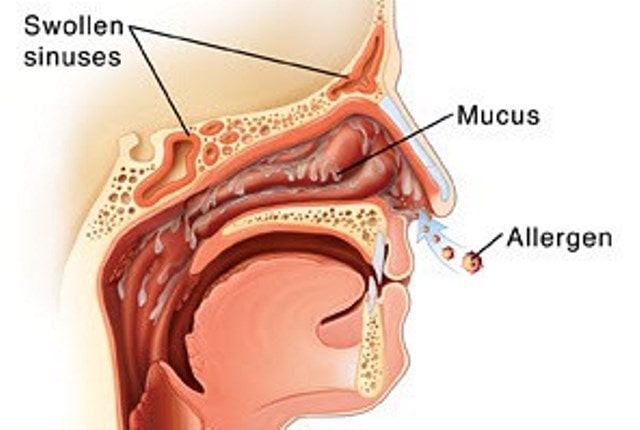Cartilage piercing is one of the most popular body modifications known today. This trend has variations.
Types and variations
- The tragus: This is a is performed on the tragus, which is the part of the ear that sticks out immediately in front of the ear canal.
- Antitragus: Its done above the earlobe of the inward ear cartilage.
- Rook: Its position is just above the tragus on the ridgepole between the inner and outer conch. The piercing passes from the underside of the ridge to the top of it.
- Helix: This type is done on the outer upper rim of the ear.
- Orbital: Here, two piercings on the cartilage are combined together with one jewelry. It is mostly located in the helix region. However, you can have it done on the earlobe or on any other part of the body.
- Daith: It passes through the innermost cartilage in the ear. The jewelry is placed over the opening of the ear trench, between the rook and the ear canal.
- Conch: This piercing is done on the cartilage inside the ear, above the earlobe and the antitragus.
- The industrial/scaffold: Here, two piercings are made on the cartilage. They are connected in most instances using a barbell or a long bit of jewelry connecting the two punches.
The image below illustrates various locations of each fo the ones we have mentioned above.

What is its pain level?
If you are planning to get a cartilage piercing, then I am sure the issue of pain has crossed your mind. The experience of pain varies differently from one individual to another. Unlike the one on the earlobe, the cartilage one is slightly more painful. However, some people have described the pain as a slight discomfort. All in all, the pain is not unbearable.
During the procedure, you may feel like you’re being pinched. On the scale of one to ten, the pain is probably a 6 or a 7 on the pain meter. You will also experience some pain after the procedure. This pain may last several weeks to a month. The good news is that there are some steps you can take to minimize the pain.
- Do not sleep lying on the pierced part as this is painful and will complicate the healing process.
- Ask the piercer to use a needle instead of the gun. The use of a piercing gun can cause trauma and increases the risk of infection.
- Take painkillers (Aspirin or Tylenol). You can take two painkillers after every four hours for the first few days. However, if the pain persists for more than a week, seek the advice of a healthcare provider.
- Ice it to minimize soreness, redness, and the pain. Ice it for the first few days.
- Take care of the piercing by avoiding bumps, hits, or frequent touching.
- Wait for it to completely heal before changing the jewelry. Cartilage piercings take time to heal. Therefore, it is advisable to be patient with the process and don’t fall into the temptation to change the jewelry unless the size of the jewelry does not properly fit.
How to care for a new one
Proper care of a new piercing will significantly reduce the healing time and minimize the risk of infection. In a survey conducted by Dr. Shari Welch, the researcher observed that there is a 34% infection rate for this type. This research sheds light on the need to properly care for it.
It is advisable to apply a gentle compress of a sterile saline solution onto the site. Remember that the piercing is like a fresh wound on your skin. Therefore, you’ll need to clean it at least twice a day. Gently compress on either side for at least 5-7 minutes, at least twice a day. This should be done daily until it completely heals. Do not apply alcohol on it as it will over dry the wound making it difficult for to heal.
It is safe to turn the jewelry while cleaning. The wetness provided by the saline solution makes it easy for you to turn it. However, do not turn it when it is dry. Remember to apply an ice compress for the swelling.
Cartilage piercing healing time
Cartilage piercing takes a longer time to heal. This is because the area where it is located does not consist of a significant vascular system. As a result, the blood flow is reduced which in turn makes healing take longer than usual.
Unlike an earlobe piercing which takes about 4-6 weeks to heal, a cartilage one takes about three to six months. The duration of healing depends on the actual type. For instance, a piercing on the tragus may take 8-16 weeks to heal. On the other hand, the rook takes 2-12 months. The daith, snug, conch, tragus and anti-tragus can take 8-16 weeks to heal. Whereas the industrial, rook, and helix may take 2-12 months. Overall, it requires patience and constant self-care until it completely heals.
Challenges and Tips
Some of the key challenges of a cartilage piercing include the long healing time, the pain and irritation, and probably the challenges of sleeping in the first few weeks. Its location can bring discomfort. If hair gets snagged on jewelry or you get a minor bump from a friend hugging you, you end up with swellings, soreness, and redness on the pierced ear. Be careful not to do anything that might snag or catch it.
Be careful not to assume that the piercing has healed. There are instances where it may appear fine after a few weeks. Whereas the outer layers may appear fine, the inner layers may still be sore and in the process of healing. Interfering with this healing process may lead to infections and may complicate the healing process.
There are instances where your body may react to the new piercing. Some people are allergic to certain metal jewelry. Most people are allergic to nickel. Nickel is a popular metal used to make jewelry. You know you are allergic when your ears itch when you wear the jewelry. Any contact with nickel leads to a rash, redness, dry patches, or swelling of the skin within 12 to 48 hours of coming to contact with the jewelry. Although the jewelry can be removed, it may lead to scarring. Incorrect placement, as well as infection or movement of the piercing, can also lead to delayed healing and complications.
Cartilage piercing is in vogue. However, if you choose to embark on this journey, opt for a professional to get the job done. In case of any issues, contact your piercer immediately. They are in a better position to advise you on what to do. Good luck!
References:


